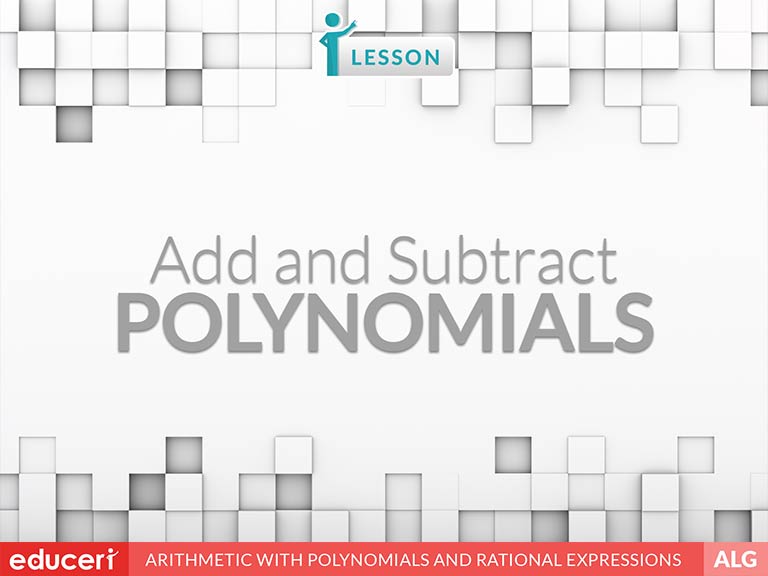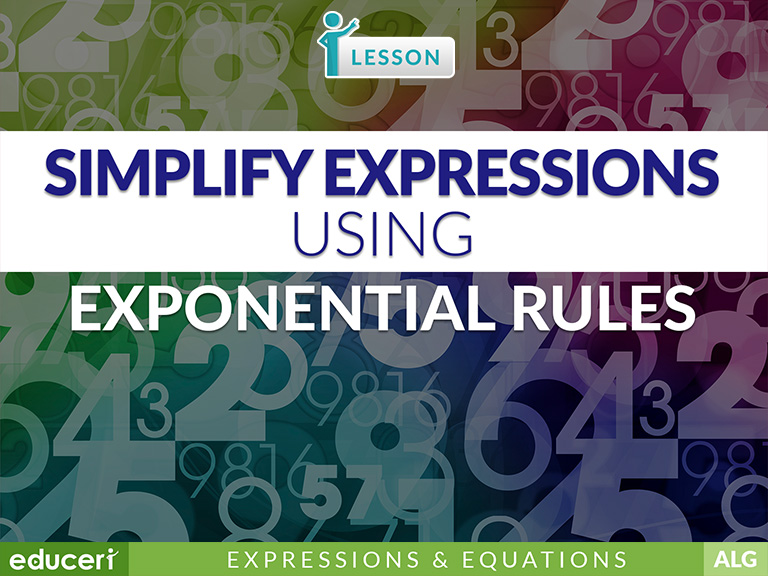All Lessons

Solve a System of Two Linear Equations in Two Variables Algebraically
HSA.REI.5 Prove that, given a system of two equations in two variables, replacing one equation by the sum of that equation and a multiple of the other produces a system with the same solutions.
HSA.REI.6HSA.REI.6 Solve systems of linear equations exactly and approximately (e.g., with graphs), focusing on pairs of linear equations in two variables.
Share This Lesson
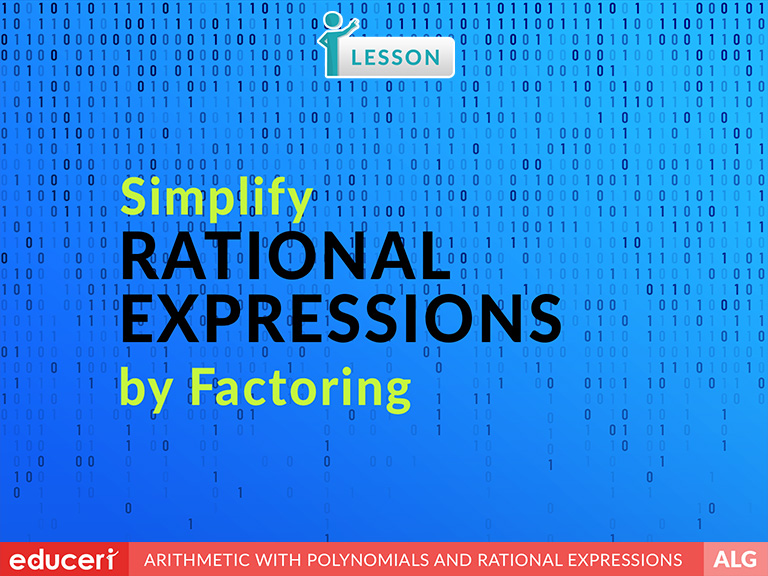
Simplify Rational Expressions by Factoring
This Algebra 1 lesson teaches students how to simplify rational expressions by factoring. The lesson includes research-based strategies and strategic questions that prepare students for assessments. Students will factor the polynomial in the numerator completely, if possible, and then the denominator. Finally, they will simplify the fraction by reducing common polynomials factors in the numerator and the denominator. In addition to the lesson, there is one page of Independent Practice and three pages of periodic review.
Share This Lesson
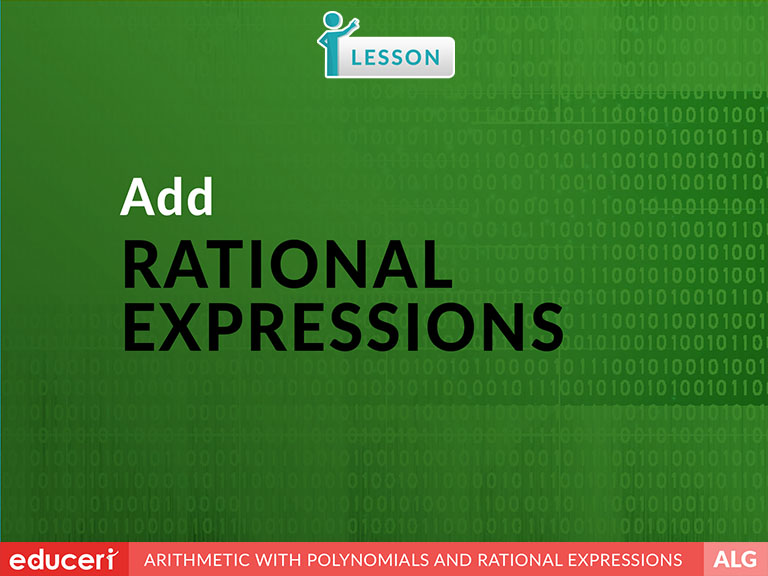
Add Rational Expressions
This Algebra 1 lesson teaches students how to add rational expressions. The lesson includes research-based strategies and strategic questions that prepare students for assessments. Students will factor the polynomials in the denominator completely, if possible, and then create equivalent fractions by finding the common denominator by multiplying the numerator and denominator of each fraction by the same rational expression. Finally, they will add the rational expressions by combining like terms in the numerator, and simplifying if needed. In addition to the lesson, there is one page of Independent Practice and three pages of periodic review.
Share This Lesson

Multiply Rational Expressions
This Algebra 1 lesson teaches students how to multiply rational expressions. The lesson includes research-based strategies and strategic questions that prepare students for assessments. Students will factor the polynomials in the numerator and denominator, if possible, and then reduce common factors if possible. Finally, they will multiply the rational expressions. In addition to the lesson, there is one page of Independent Practice and three pages of periodic review.
Share This Lesson

Solve Quadratic Equations by Factoring
HSA.REI.4 Solve quadratic equations in one variable.
HSA.REI.4.BHSA.REI.4.B Solve quadratic equations by inspection (e.g., for x^2 = 49), taking square roots, completing the square, the quadratic formula and factoring, as appropriate to the initial form of the equation. Recognize when the quadratic formula gives complex solutions and write them as a ± bi for real numbers a and b.
Share This Lesson

Solve Rate Problems
HSN.Q.1 Use units as a way to understand problems and to guide the solution of multi-step problems; choose and interpret units consistently in formulas; choose and interpret the scale and the origin in graphs and data displays.
HSA.CED.1HSA.CED.1 Create equations and inequalities in one variable and use them to solve problems. Include equations arising from linear and quadratic functions, and simple rational and exponential functions.
This Algebra 1 lesson teaches students how to solve rate problems. The lesson includes research-based strategies and strategic questions that prepare students for assessments. Students will identify whether the problem is a distance addition or equal distance model. Then, they will organize the information using a distance, rate, and timetable, representing unknown values algebraically. Finally, they will set up an equation using distances, solve for the unknown rate or time, find remaining unknown values, and interpret the solution in a complete sentence. In addition to the lesson, there are two pages of Independent Practice and six pages of periodic review.
Share This Lesson

Solve Quadratic Equations Using the Quadratic Formula
HSA.REI.4 Solve quadratic equations in one variable.
HSA.REI.4.AHSA.REI.4.A Use the method of completing the square to transform any quadratic equation in x into an equation of the form (x - p)2 = q that has the same solutions. Derive the quadratic formula from this form.
HSA.REI.4.BHSA.REI.4.B Solve quadratic equations by inspection (e.g., for x^2 = 49), taking square roots, completing the square, the quadratic formula and factoring, as appropriate to the initial form of the equation. Recognize when the quadratic formula gives complex solutions and write them as a ± bi for real numbers a and b.
Share This Lesson
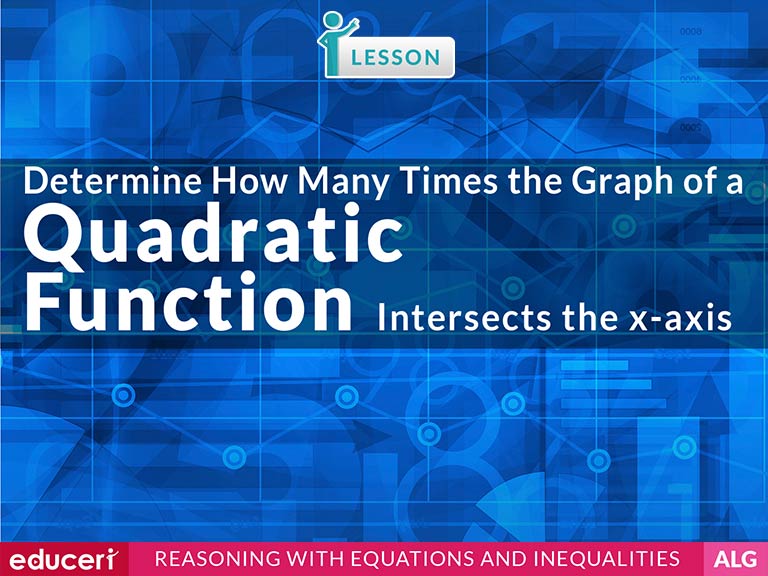
Determine How Many Times the Graph of a Quadratic Function Intersects the X-Axis
(A) Graph quadratic functions on the coordinate plane and use the graph to identify key attributes, if possible, including x-intercept, y-intercept, zeros, maximum value, minimum values, vertex, and the equation of the axis of symmetry
A1.8.A(A) Solve quadratic equations having real solutions by factoring, taking square roots, completing the square, and applying the quadratic formula
HSA.REI.4 Solve quadratic equations in one variable.
HSA.REI.4.BHSA.REI.4.B Solve quadratic equations by inspection (e.g., for x^2 = 49), taking square roots, completing the square, the quadratic formula and factoring, as appropriate to the initial form of the equation. Recognize when the quadratic formula gives complex solutions and write them as a ± bi for real numbers a and b.
Share This Lesson

Solve Equations with Unknown Coefficients
(A) Solve linear equations in one variable, including those for which the application of the distributive property is necessary and for which variables are included on both sides
A1.12.E(E) Solve mathematic and scientific formulas, and other literal equations, for a specified variable.
Share This Lesson

Solve Compound Inequalities
Share This Lesson
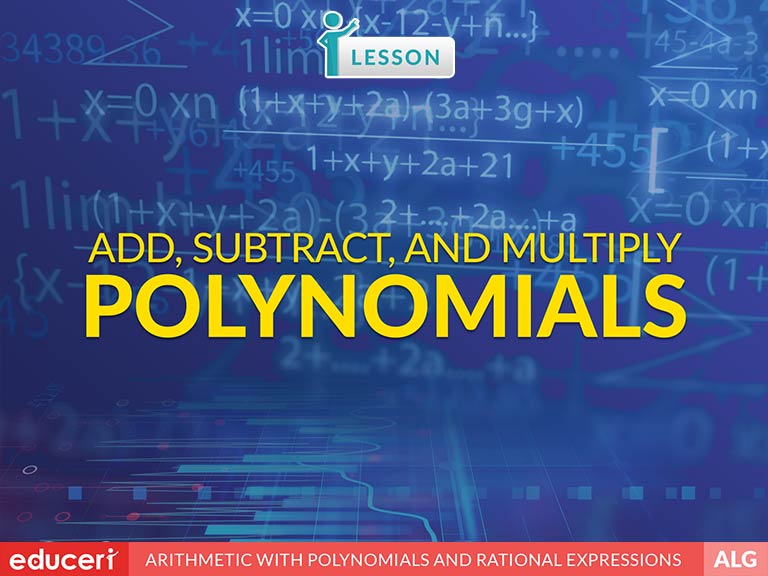
Add, Subtract, and Multiply Polynomials
Share This Lesson

Solve Multi-Step Linear Inequalities
Share This Lesson
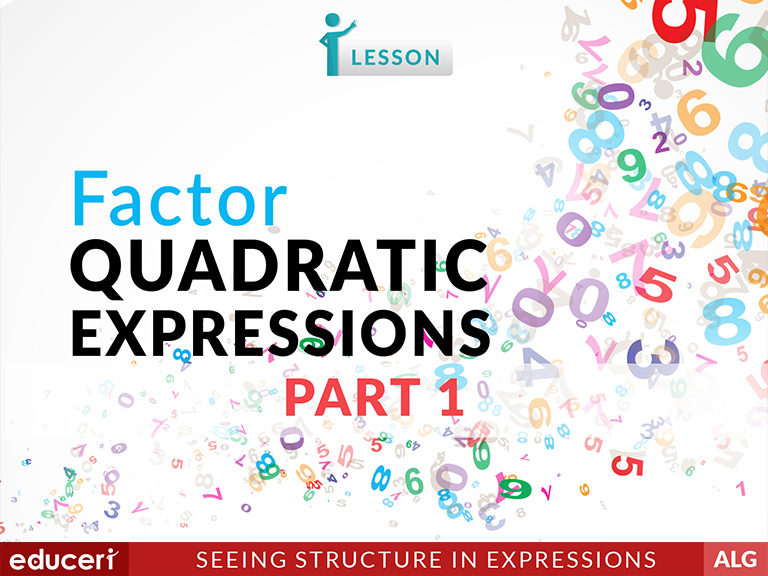
Factor Quadratic Expressions - Part 1
(8) Quadratic functions and equations. The student applies the mathematical process standards to solve, with and without technology, quadratic equations and evaluate the reasonableness of their solutions. The student formulates statistical relationships and evaluates their reasonableness based on real-world data.
A1.8.A(A) Solve quadratic equations having real solutions by factoring, taking square roots, completing the square, and applying the quadratic formula
Share This Lesson
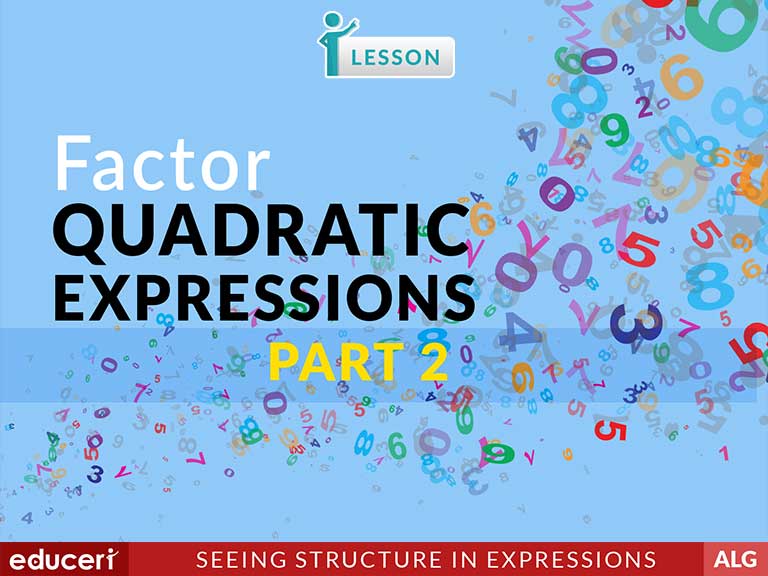
Factor Quadratic Expressions - Part 2
(8) Quadratic functions and equations. The student applies the mathematical process standards to solve, with and without technology, quadratic equations and evaluate the reasonableness of their solutions. The student formulates statistical relationships and evaluates their reasonableness based on real-world data.
A1.8.A(A) Solve quadratic equations having real solutions by factoring, taking square roots, completing the square, and applying the quadratic formula
Share This Lesson

Solve Exponential Equations
(C) Write exponential functions in the form f(x) = abx (where b is a rational number) to describe problems arising from mathematical and real-world situations, including growth and decay
A2.5.D(D) Solve exponential equations of the form y = abx where a is a nonzero real number and b is greater than zero and not equal to one and single logarithmic equations having real solutions
PCAL.5.I(I) Generate and solve exponential equations in mathematical and real-world problems
